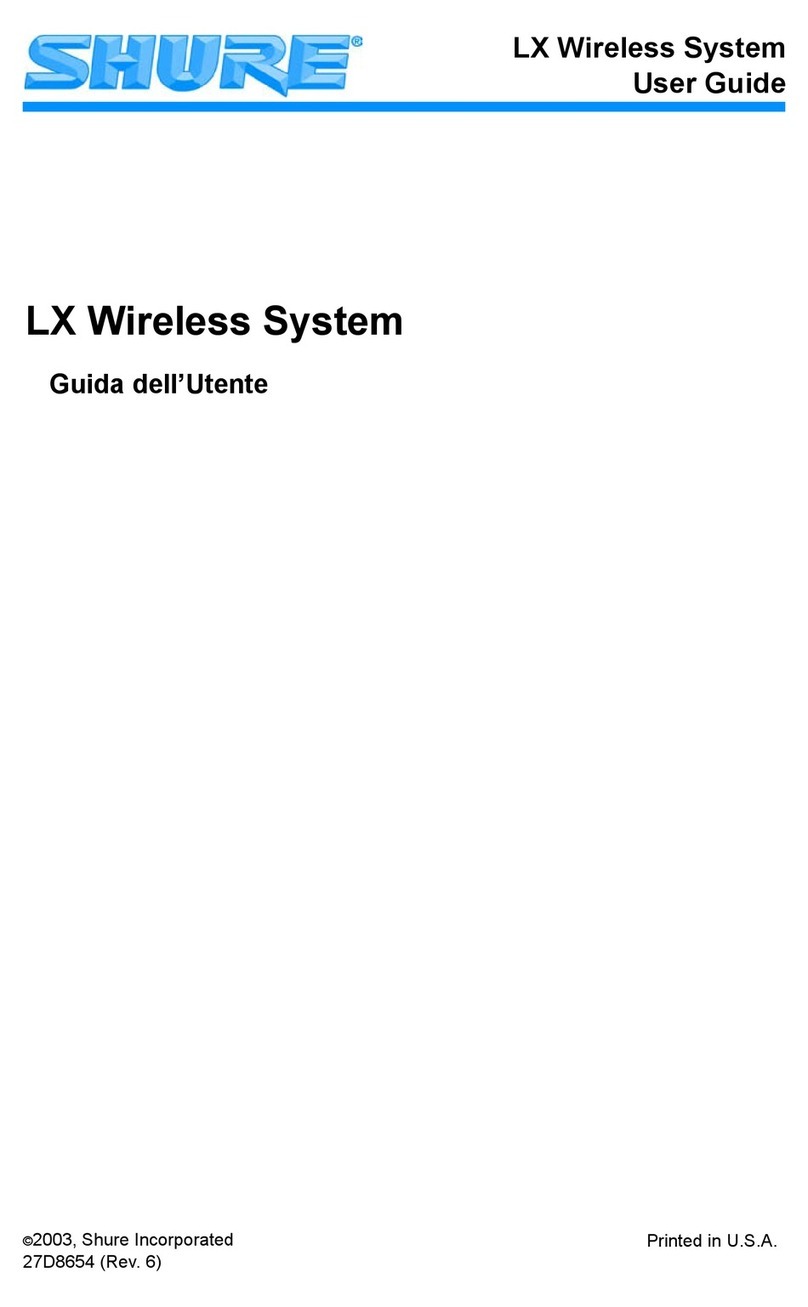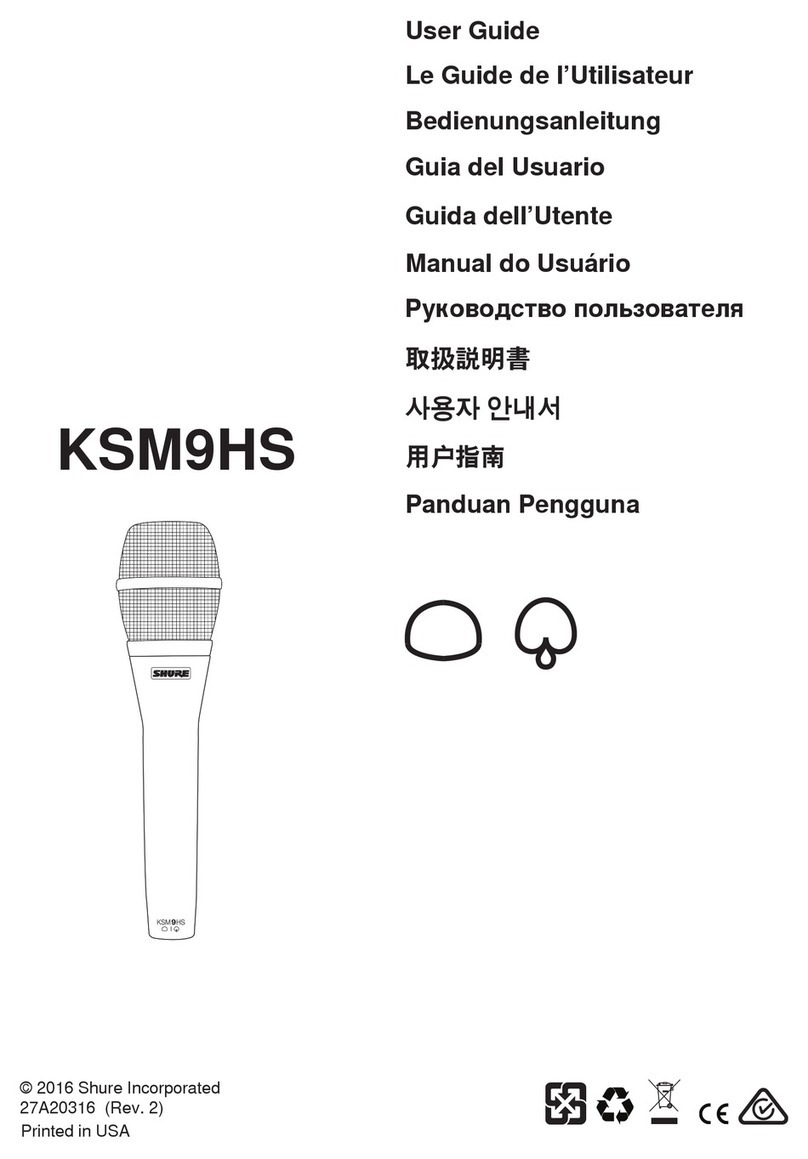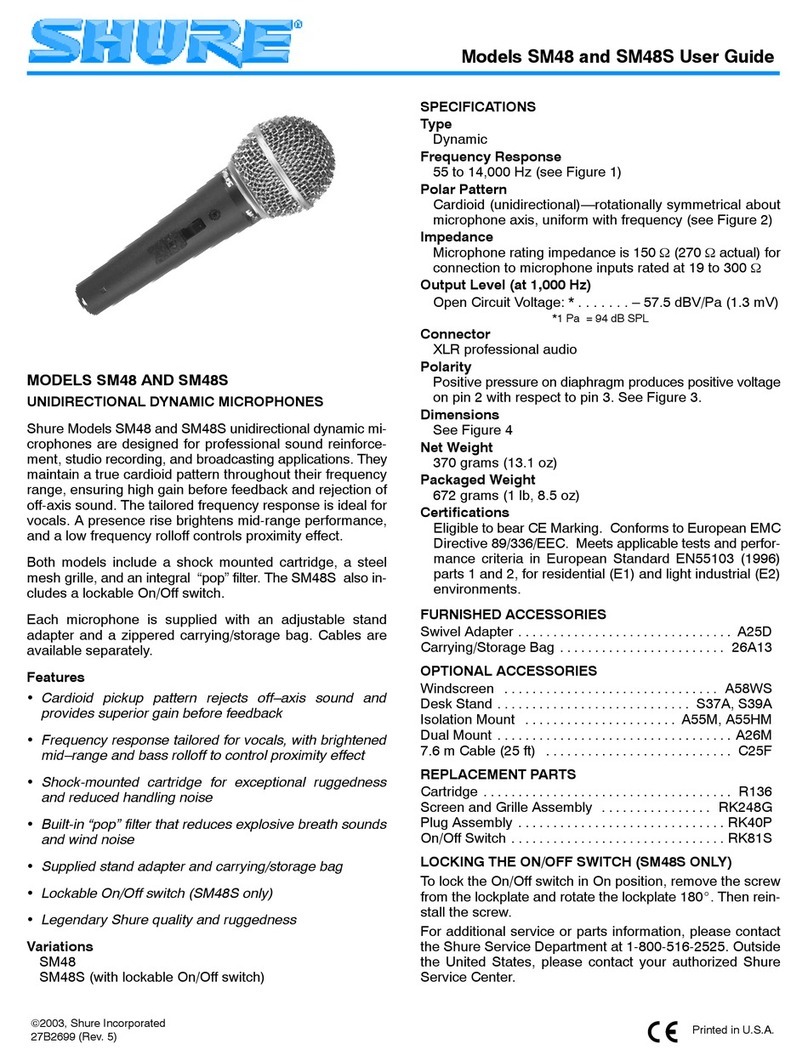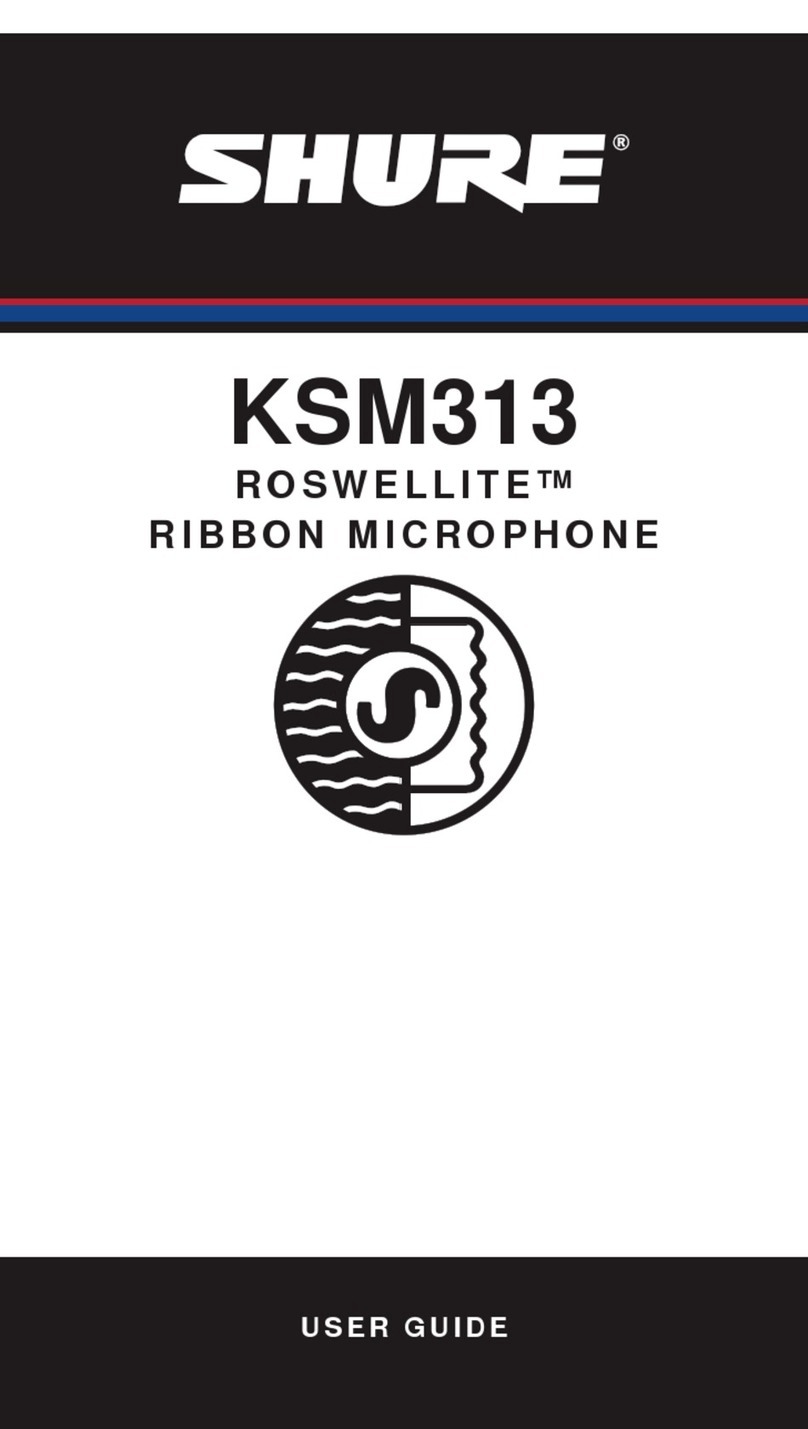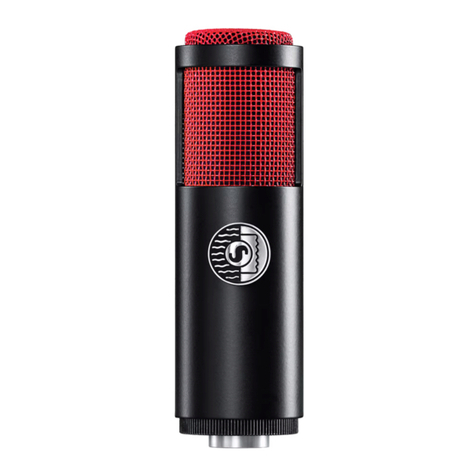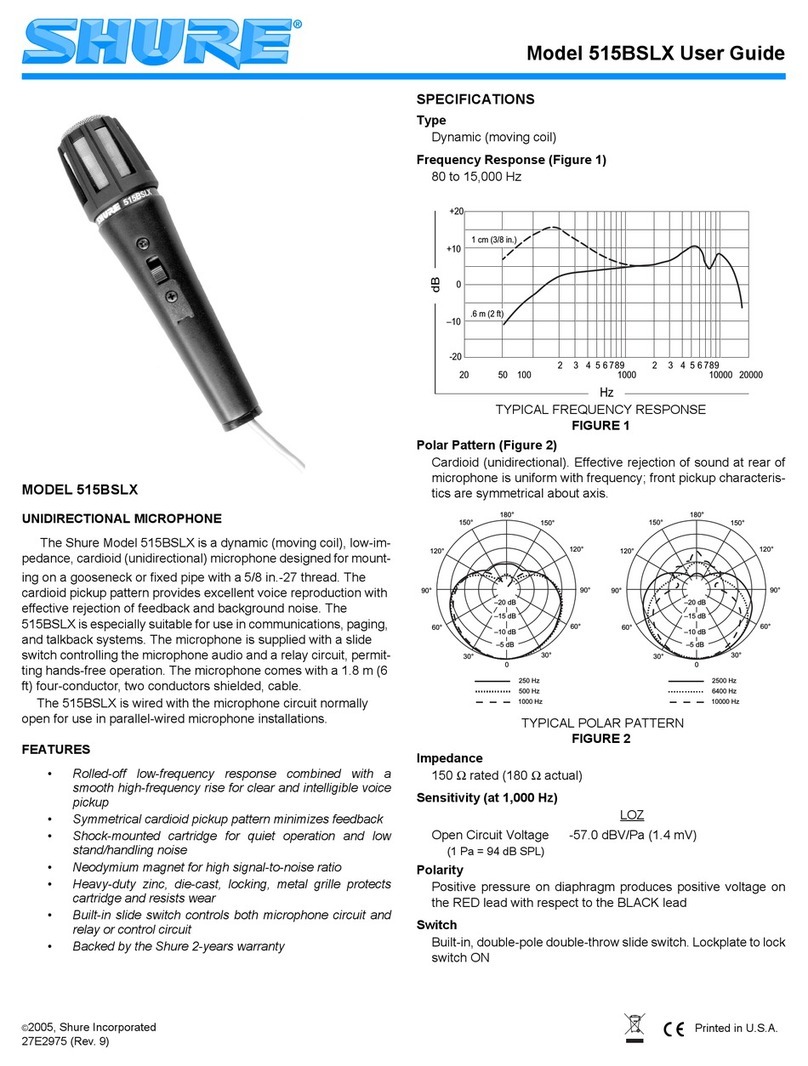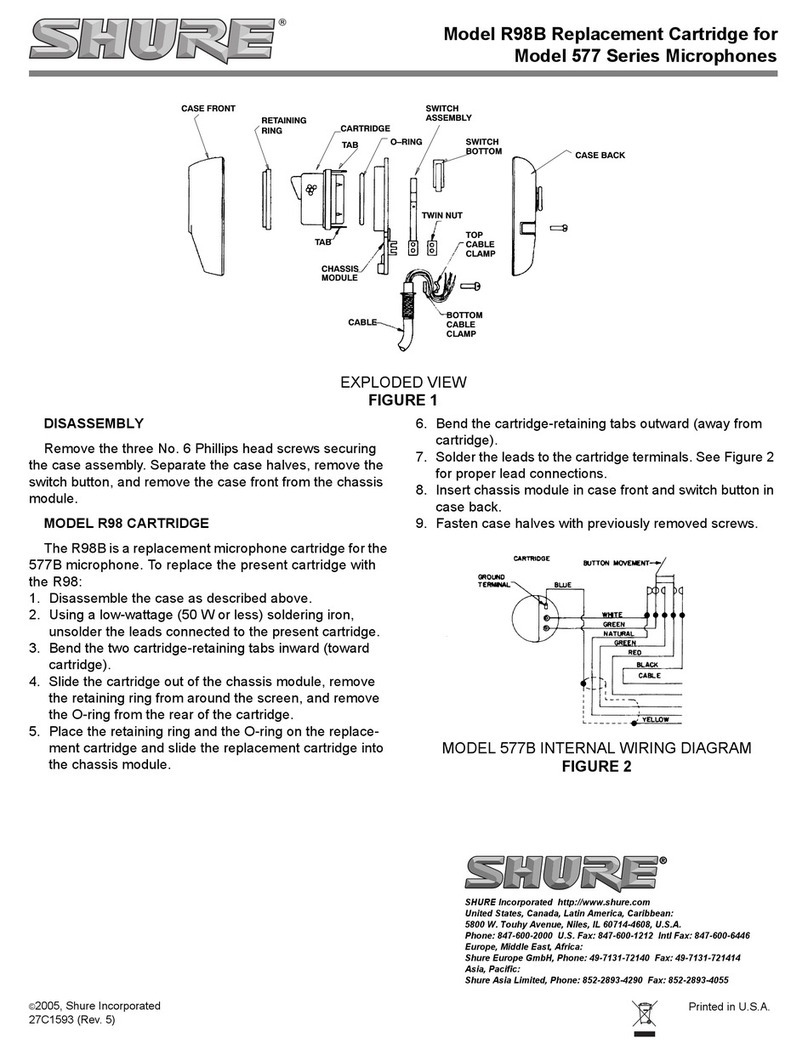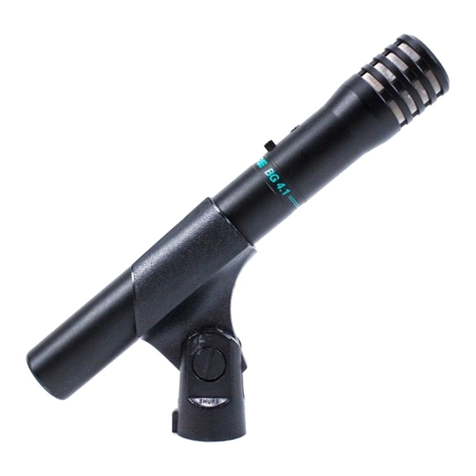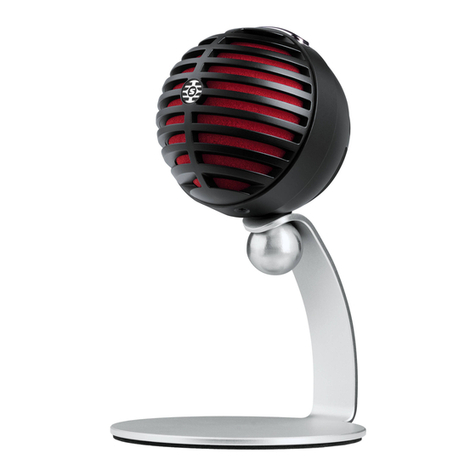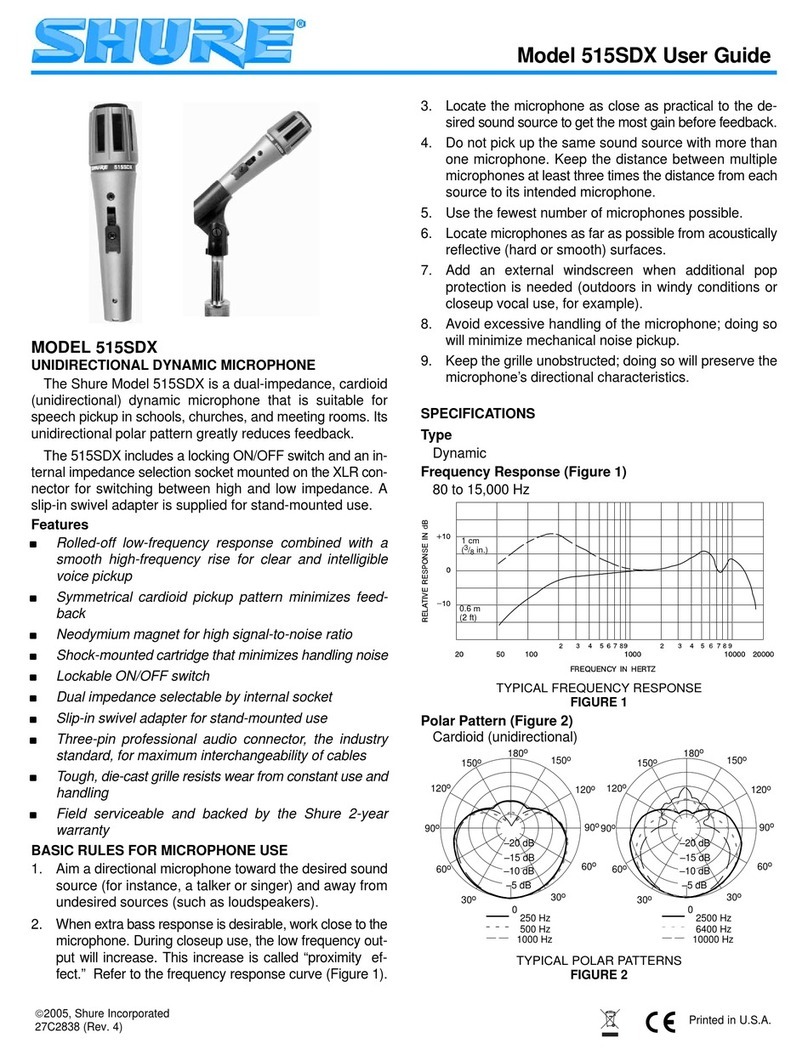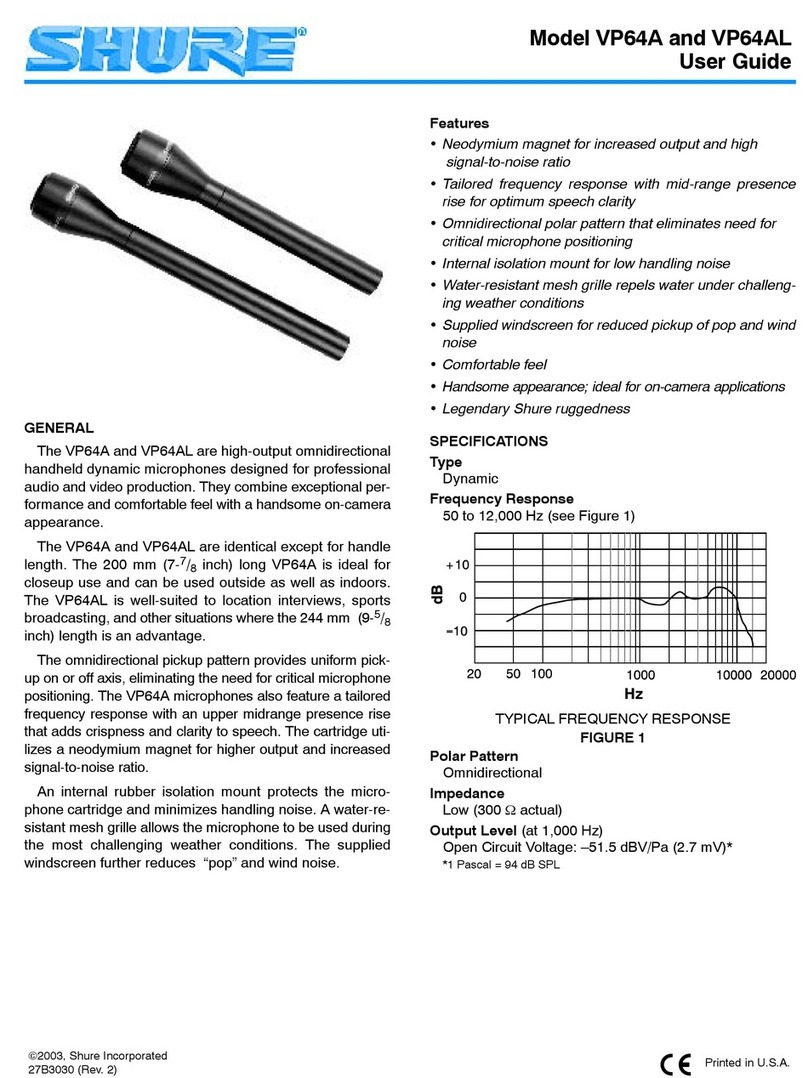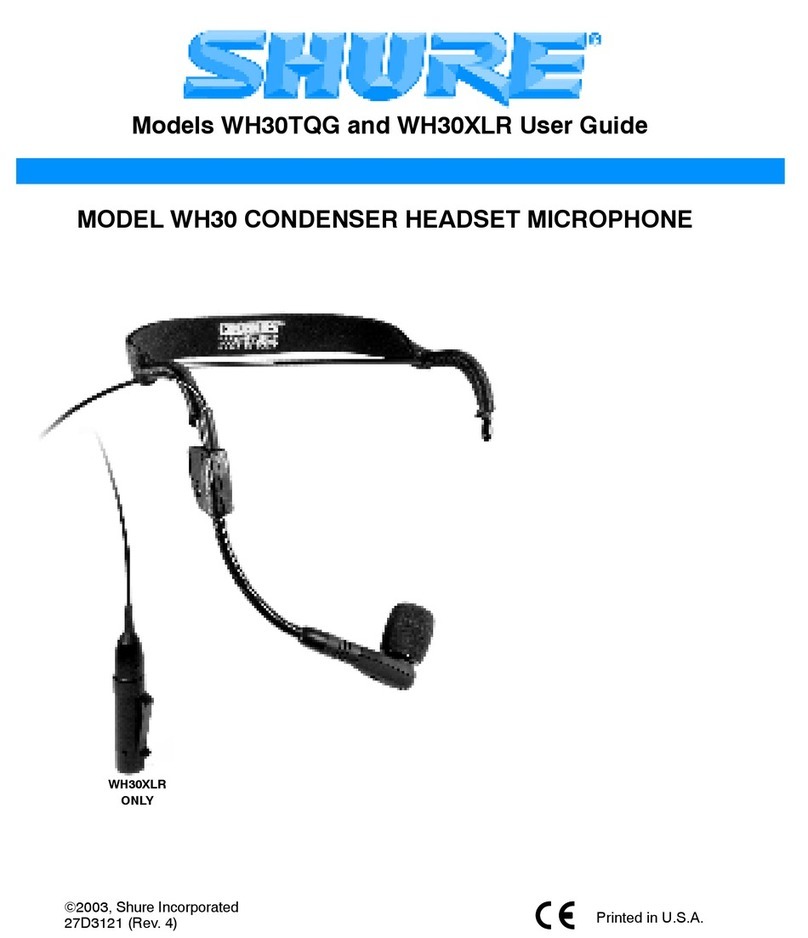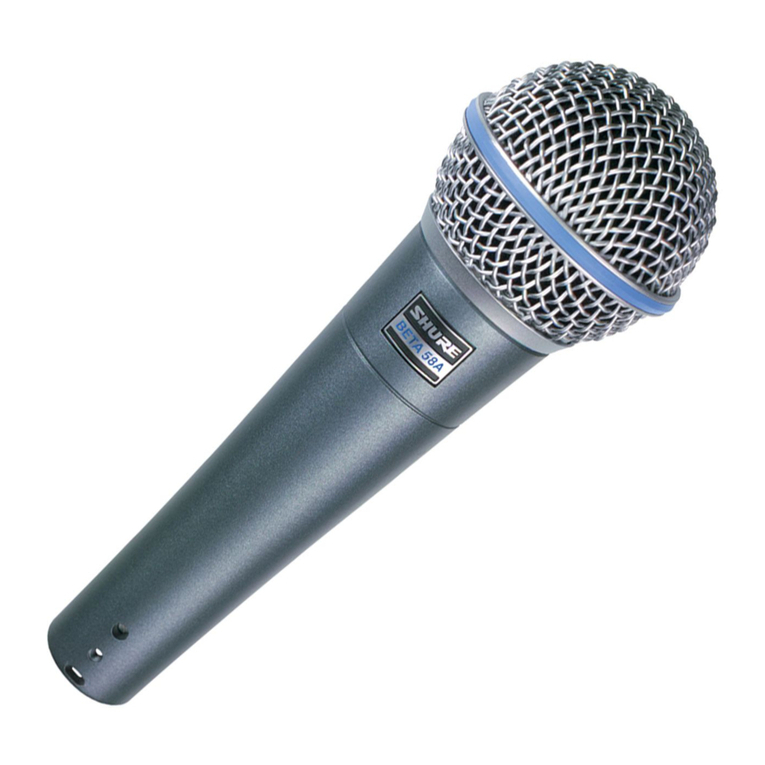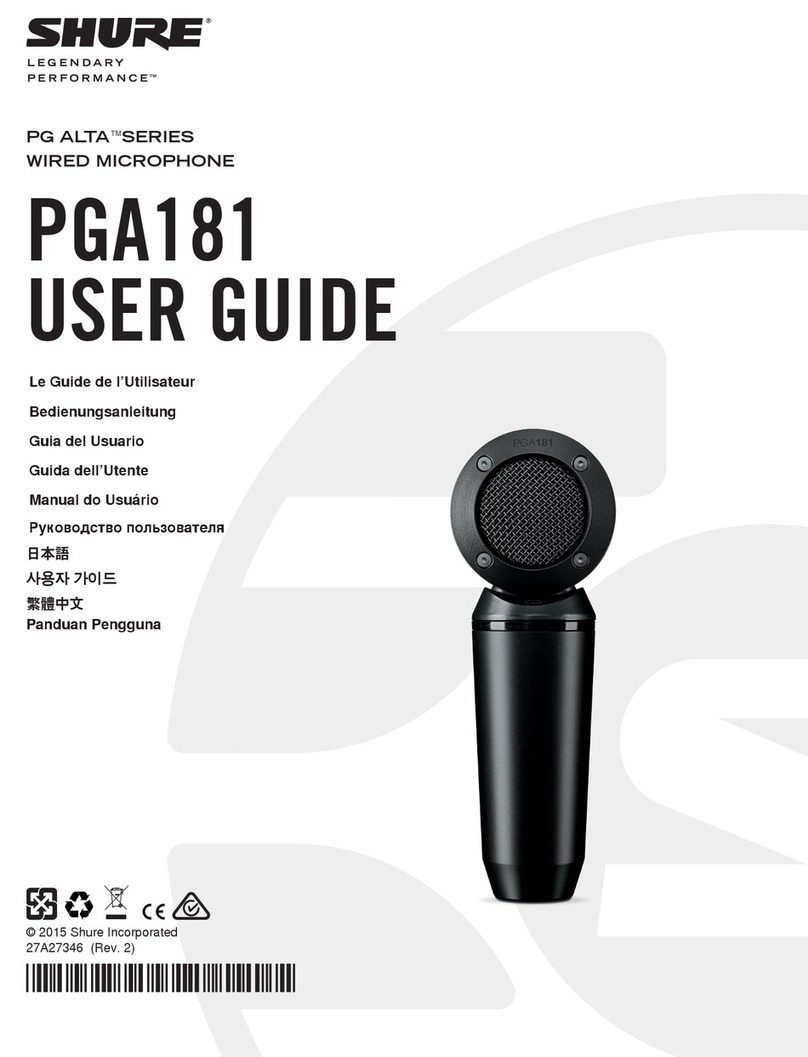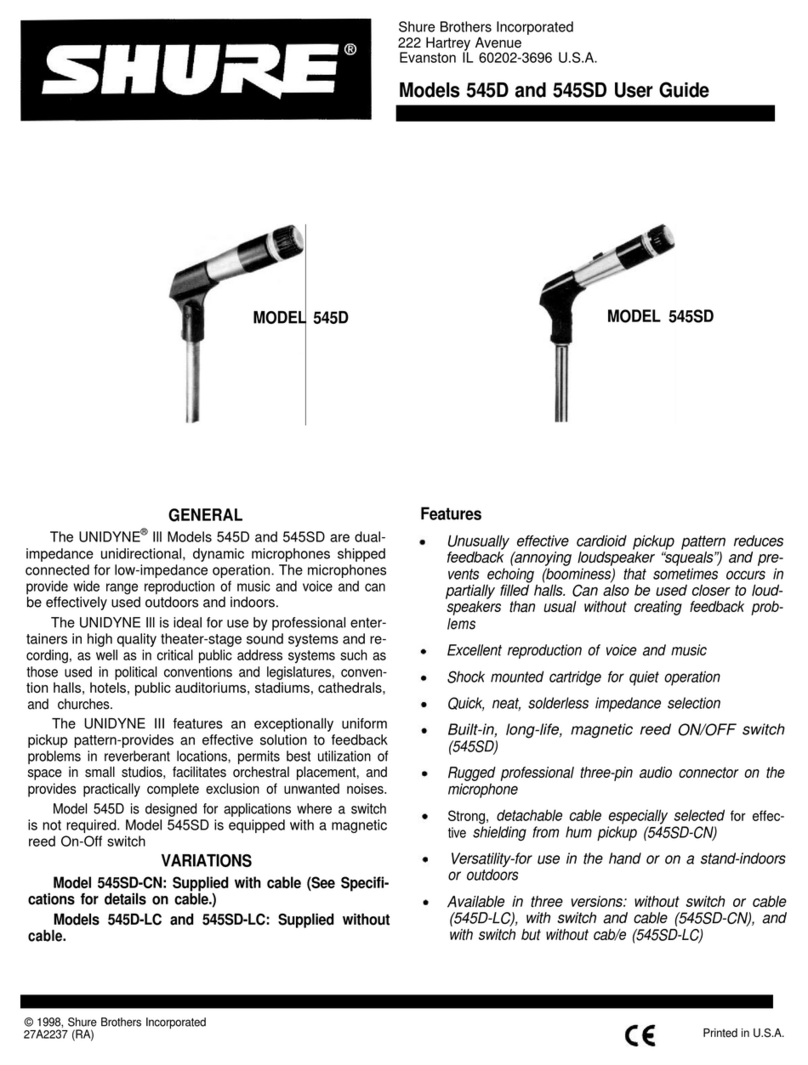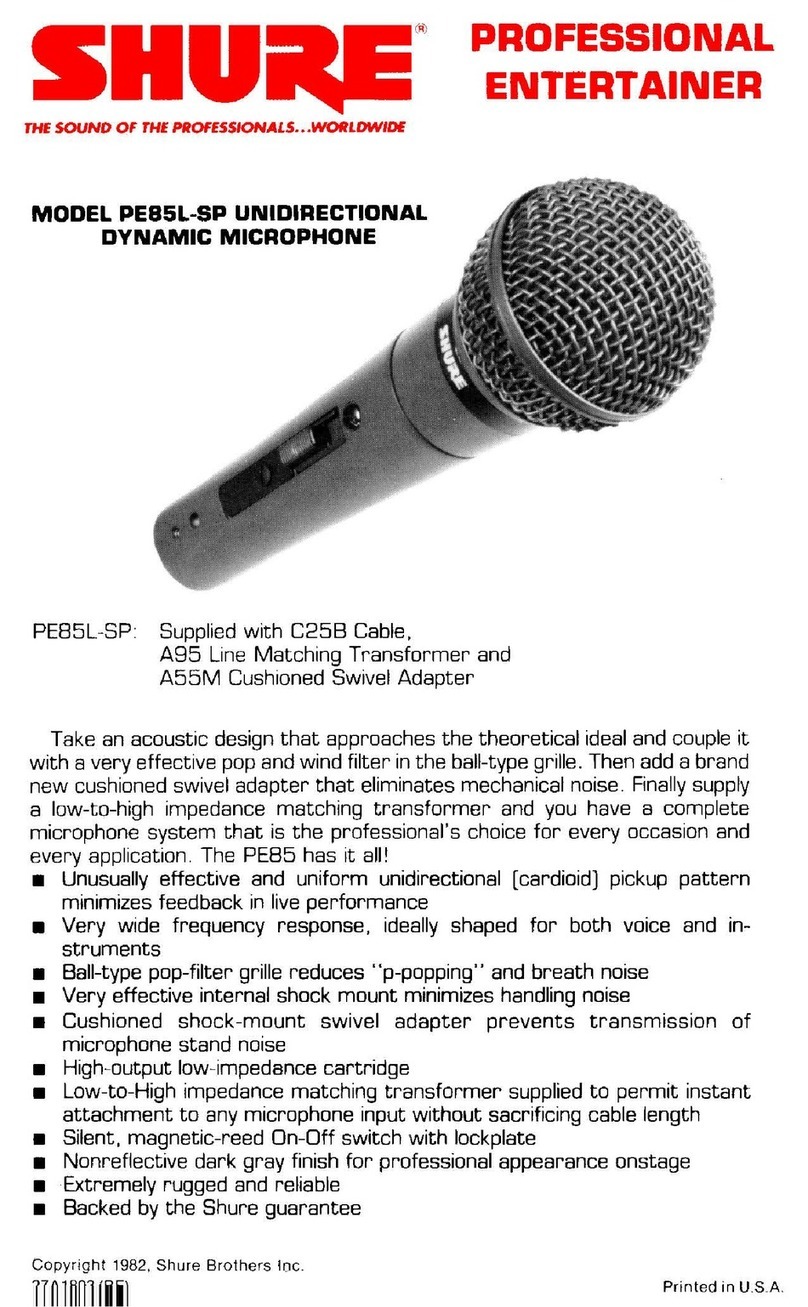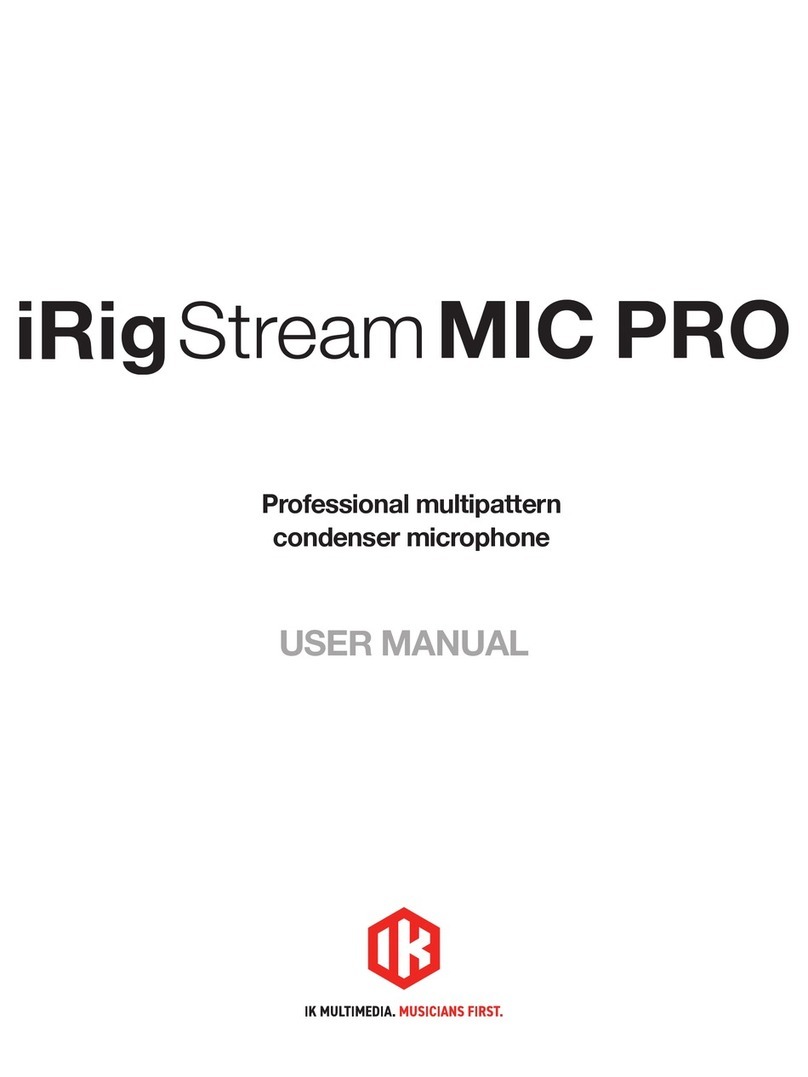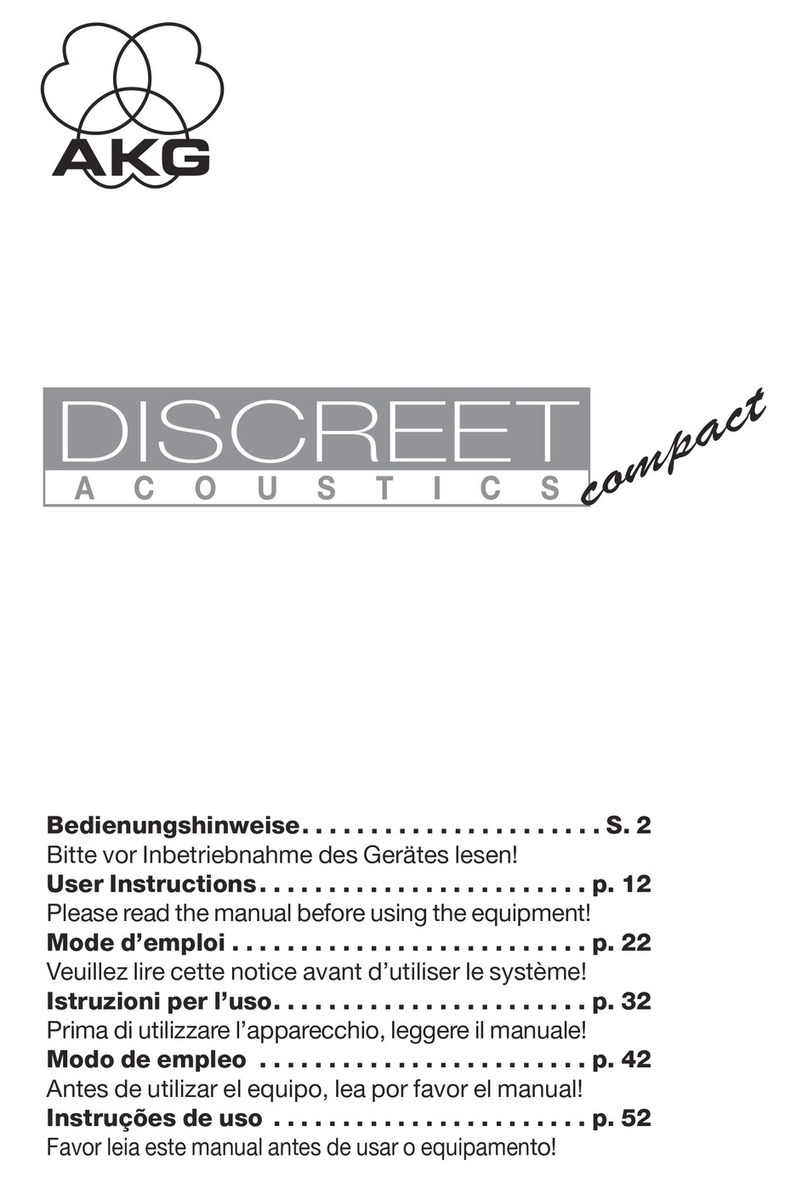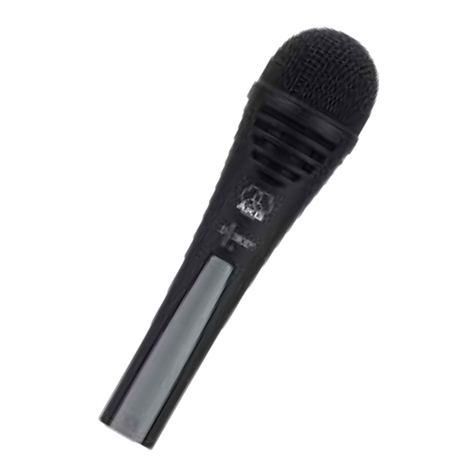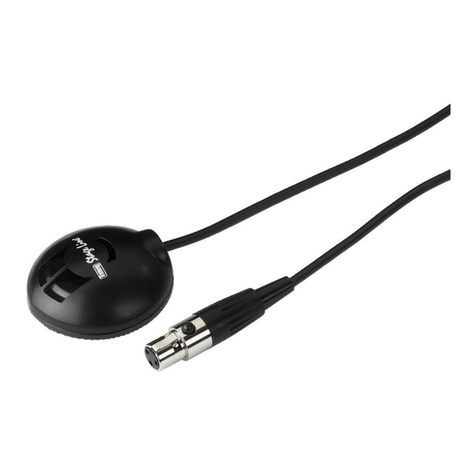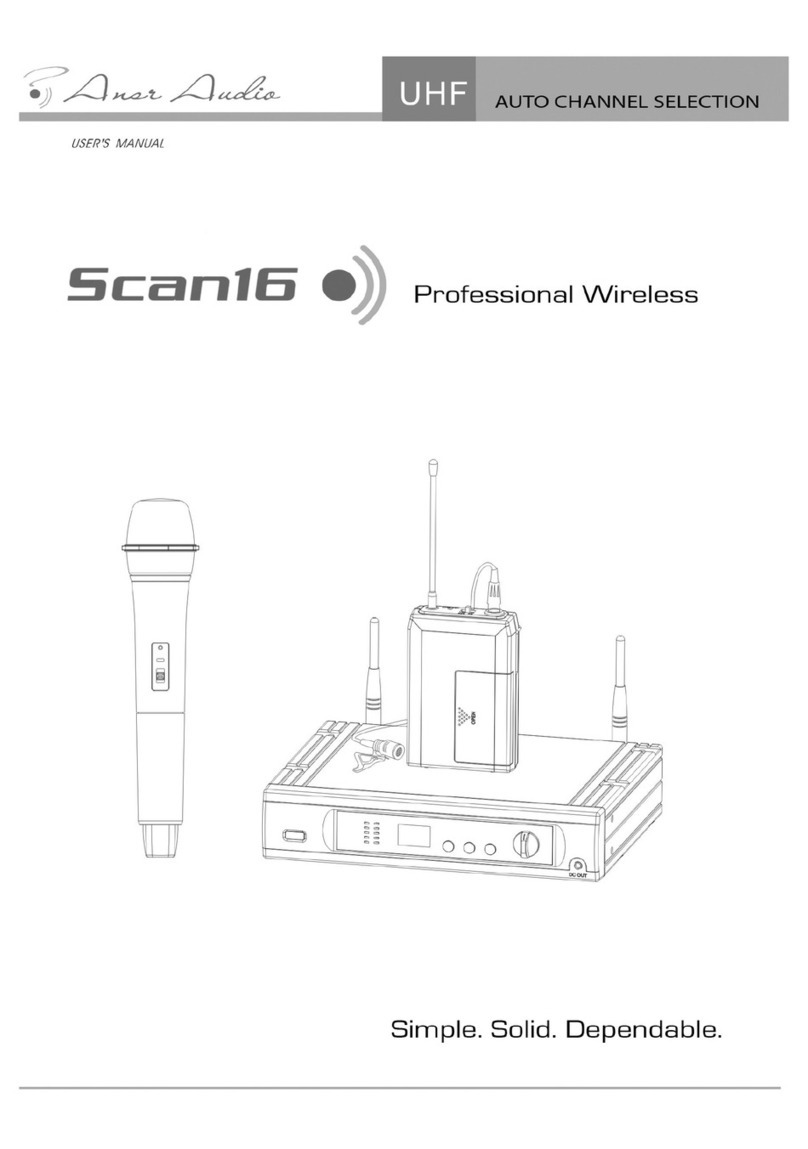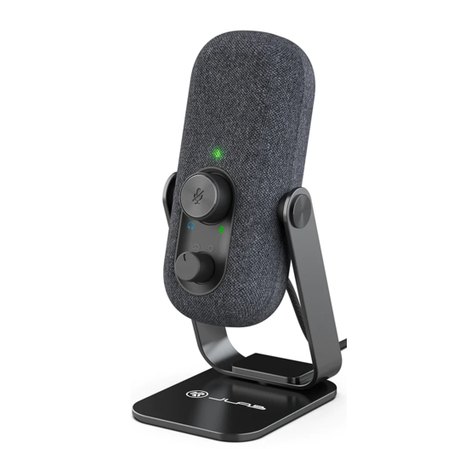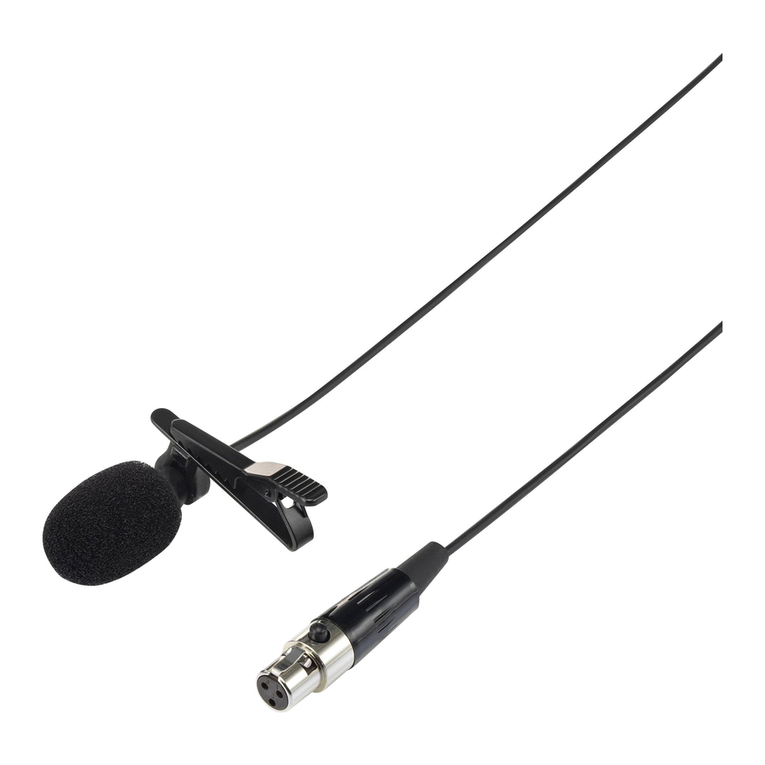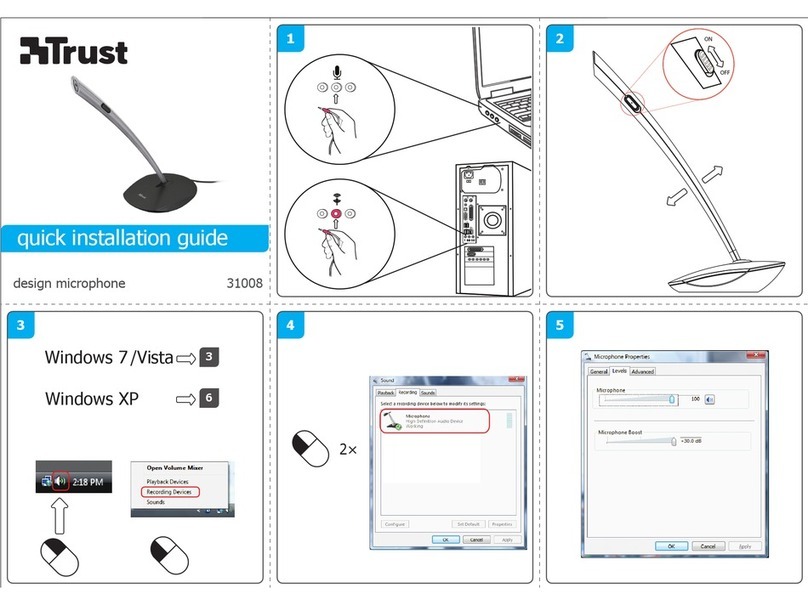is “feedback.” This is a harsh, shrill squeal which occurs
when the microphone picks up sound from the loudspeak-
ers, re-amplifies and rebroadcasts it over and over again.
But take heart, you have already taken the best possible
step to defeat feedback by selecting
a
Shure Unisphere
Microphone. The unidirectional (frontal pickup) charac-
teristics
of
the microphone are valuable in rejecting the
sound from the loudspeakers
so
that feedback does not
occur.
Another factor to remember in the prevention
of
feedback
is the position
ot
the loudspeakers in relation to the micro-
phone. Even with a Unisphere Microphone, feedback can
occur if the front (live) end of the microphone picks up
sufficient sound coming
t
rom loudspeakers. Keep the
loudspeakers
as
far to the sides as possible-and
so
they
do
not point toward the front
of
the microphone.
Wheri-
ever possible, it
is
good practice to keep the microphone
between the performer and the loiid\peakers.
If you are in a room with hard walls,
floor,
and ceiling,
the sound from the loudspeakers may bounce back into
the microphone and create feedback. Solve this problem by
turning down the amplifier volume control and working
closer to the microphone.
microphone technique will add to the over-all effectiveness
with which you project yourself
to
your audience. Keep
owing points in mind when using the microphone:
ntain the proper distance from the microphone.
en you wish to achieve an intimate tonal quality,
get closer to the microphone and lower your voice.
For
wide-open “driving” effects, raise your voice and
back away from the microphone
so
that you do not
your distance from the micro-
ct the
level
of
sound coming
erdrive your amplifier
to
distortion.
3.
Consider the microphone as an instrument and prac-
tice your technique to enhance your performance.
USING MORE THAN ONE MIC
It will often be desirable
for a
group
to use
a
separate
microphone for each individual performer.
In
this case,
the following points should he remembered.
1.
It is best if the microphones are individually controlled
at the amplifier for volume,
or
through
a
separate
microphone mixer.
If
this is not possible,
it
is desirable
that each performer
use
the saine type and model
of
inicrophone
so
that the performance
of
the group as
a
whole
will
he “balanced.”
2.
Check the placement of the microphones with relation
to loudspeakers (as mentioned before)
so
that feed-
back is minimized.
Your Shure Microphone
is
ruggedly built and should give
you years
of
uninterrupted service; however, remember
that it is
a
sensitive electronic instrument. Avoid dropping
the unit,
or
subjecting it to unnecessary rough treatment
Normal usage, of course, will not impair performance
of
the unit. Use the protective carrying case to prevent dam-
age not only when traveling, but also when storing the
microphone.
(~I~~Cr~-LIST
IZ
1.
Check microphone connector-is It plugged into the
high impedance input
of
the mplifier”
2.
Check microphone cable connector\ to niicrophonc
‘tnd
to amplifier-are they tightly plugged in)
3.
Check amplifier.
a.
Is
it turned on‘)
b.
Is
volume control for microphone turned up’
If
microphone still does not appear
to
he
operating
C
hech
microphone on
a
spare ccible.
It
microphone
\till
doe\
not
appear
to
be operating, have unit checked by
your
Shrrie
Professional Entertainer Products
Deder,
or writc Service
